Nara is an area that served as Japan’s capital more than 1,300 years ago. It is rich in historical and beautiful sites, among which is the famous tourist attraction, Nara Park. Here, visitors can interact with wild deer, and the area is also known for the UNESCO World Heritage site, Horyu-ji Temple.
Nara flourished as Japan’s capital around the 8th century. In the northern part, including Nara City where the capital was located, there are numerous historical sites, ancient buildings, and ruins. In the southern part, Nara is known for its natural beauty, with mountains like Mount Tamaki, rising over 1,000 meters, and Mount Yoshino, a revered site for mountain worship and ascetic training.
Weather and Tourist Seasons in Nara
Due to Nara’s varied terrain, which includes basins, highlands, and mountains, the climate differs across regions. However, the area generally experiences hot, humid summers and cold winters. For this reason, spring and autumn are the best seasons for sightseeing.
Highlights and Things to Do in Nara
Nara’s main tourist areas are divided into four regions: Nara, Ikaruga, Asuka, and Yoshino. Below are the highlights of each area.
Nara Area: Historical Sites like Nara Park, Where You Can Interact with Deer, and Todai-ji Temple
The Nara area centers around Nara City, near JR/Kintetsu Nara Stations. Major tourist spots are located around Nara Park, a nature-rich area home to over 1,000 wild deer. The park also includes famous temples such as Todai-ji, where a 15-meter-tall Great Buddha statue sits, and the Nara National Museum, which displays many Buddhist artworks.
Ikaruga Area: Nara’s Most Historic Buildings, including the World Heritage Site Horyu-ji Temple
The Ikaruga area is home to numerous temples and shrines. Of particular note is the Prince Shotoku, who played an active role in the 6th and 7th centuries, along with the pagoda associated with his family. Among these sites, the World Heritage-listed Horyu-ji Temple stands out. The Kindo and Pagoda, towering at around 32 meters, are the oldest wooden structures in the world and showcase the advanced building technology of that era.
Additionally, the area has other notable sites, such as Chugu-ji, which houses one of the three main smiling Buddha statues, and Hokiji, famous for Japan’s oldest three-story pagoda.
Asuka Region – Ancient Ruins in Nara, with Old Tombs and Stone Remains
The Asuka area, particularly around Asuka Village, is known for ancient tombs, ruins, and unusual stones. The tombs vary in shape and size, with unique ones like the Ishibutai Burial Mound, made from megaliths, and the Kitora Tomb, featuring rare wall paintings.
Yoshino Area – Natural Beauty in Nara, Especially Cherry Blossoms in Every Season
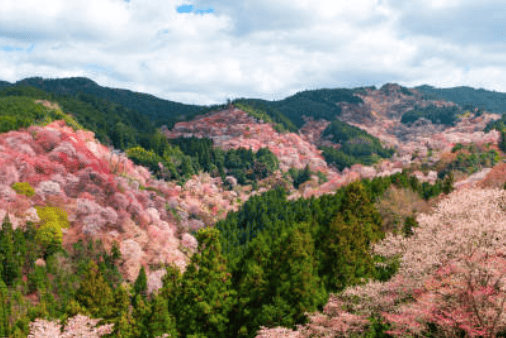
In the Yoshino region, located in southern Nara, lies Mount Yoshino, designated as a World Heritage site. Yoshino is one of Japan’s top cherry blossom viewing spots, with around 200 varieties blooming every spring. The stunning view of pink and white blossoms blanketing the mountains is breathtaking. This area also serves as a hot spring resort, with a footbath at the Totsugawa Go roadside station and other one-day hot spring facilities.
After visiting Fushimi Inari Shrine, I continued to the city of Nara via the JR Nara Line.
Train to Nara
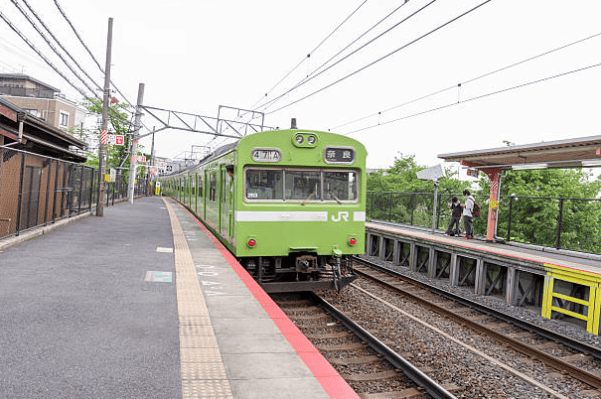
Nara wasn’t originally in my main itinerary because I couldn’t estimate the time I’d spend in Kyoto and Inari. However, it turned out I had enough time, so I took the JR train from Inari back to Kyoto Station and transferred to a Rapid train heading to Nara.
If you’re coming directly from Kyoto, there’s a rapid train option that takes 45 minutes and costs ¥750. If you’re coming from JR Osaka Station, you can take the JR Yamatoji Rapid Service, which takes 50 minutes and costs ¥800 one way.
If you have a Kintetsu Pass or prefer to take the Kintetsu train from Kyoto or Osaka, Nara is also served by the Kintetsu Nara Line, and it has its own station, Kintetsu Nara Station.
Arriving in Nara
I arrived at Nara Station at 4 p.m. Without having done any research, I went to the Tourist Office at the station. A friendly staff member, who spoke English, looked at her watch as soon as I asked about transportation to Todai-ji Temple. She told me that it would close at 5 p.m., so I might not make it. But she encouraged me to try, giving me a map and the bus number I needed.
Nara City
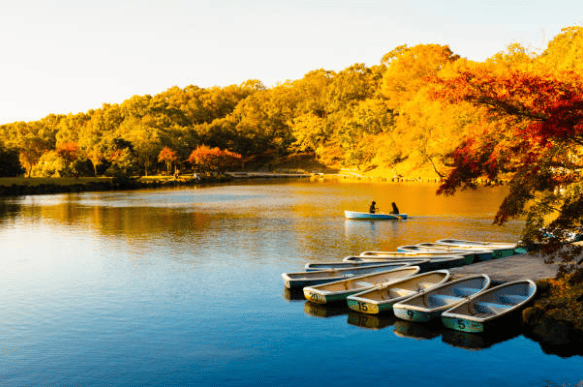
Nara was Japan’s capital from 710-784, giving it a rich historical legacy with centuries-old buildings still well-preserved.
I didn’t have enough time to explore the city, so I headed straight to Todai-ji Temple. If you have more time, it’s worth visiting the Heijo Palace Site (the ruins of the palace from the 700s) and Yakushi-ji Temple.
Bus route loop line No. 1 (counterclockwise) and No. 2 (clockwise) are convenient for getting around Nara and reaching Todai-ji Temple from the stop in front of JR Nara Station.
Todai-ji Temple
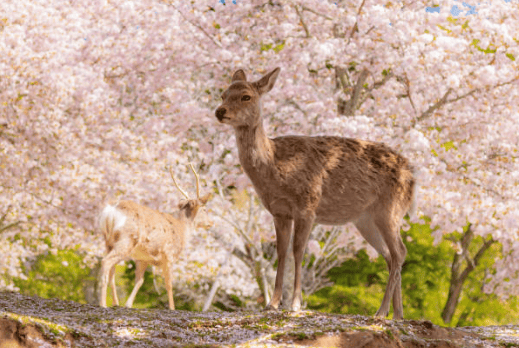
Before reaching Todai-ji, next to Nara Park, you’ll walk through a vast park filled with freely roaming deer. If you’d like, you can feed them special snacks (Shika Senbei) sold nearby.
This temple is one of Japan’s most famous World Heritage Sites and a symbol of Nara. Todai-ji (東大寺, Tōdaiji, “Great Eastern Temple”) was built in 795 but was destroyed by fire in 1180 and again in 1567. The current building, from the 17th century, is 33% smaller than the original. Admission is ¥500.
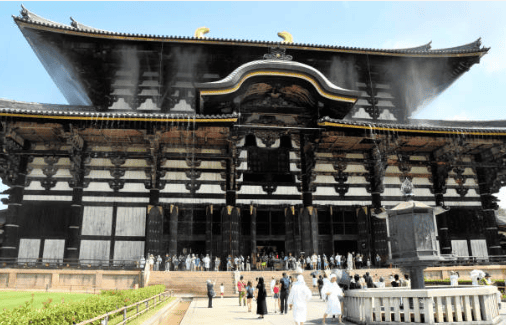
The Daibutsuden (Big Buddha Hall) might look unremarkable in photos, but when you see it in person, the sheer scale of the building is impressive. The building reaches a height of 50 meters. To capture the entire structure in a photo, you need to stand dozens of meters away.
Inside, there is a bronze Buddha statue coated in gold, sitting 20 meters tall. Just imagine—the Buddha’s ear alone is 2.5 meters in length.

There are also other statues of deities inside, equally impressive, seemingly carved from wood. You’ll also find a 1/50 model of the Buddha Hall, depicting its appearance in the 700s, the 1100s, and today.
I could only spend a short time in the main hall as it was already 5 p.m., and the staff was ushering people out. After strolling through the park and seeing the deer, I took the bus back to JR Nara Station to return to Kyoto. Overall, I highly recommend adding Nara to your itinerary.

Can you be more specific about the content of your article? After reading it, I still have some doubts. Hope you can help me.